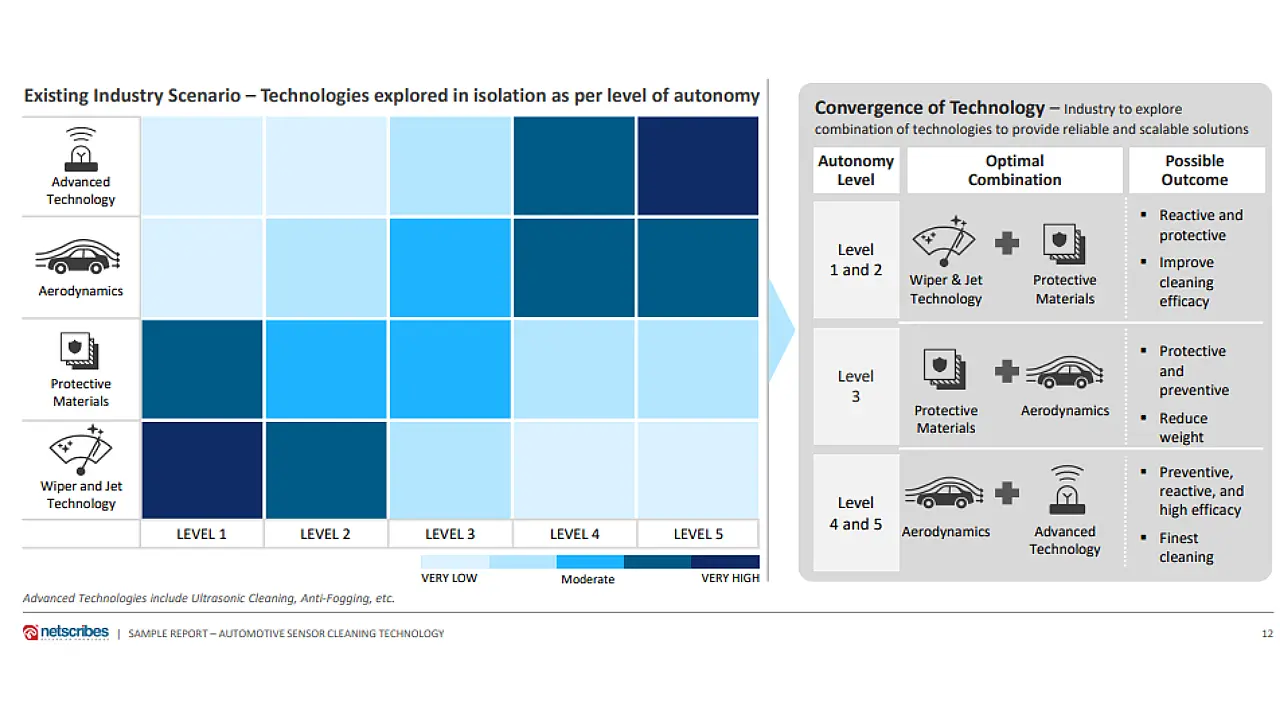
Several ADAS and autonomous vehicle engineers are on the lookout for efficient sensor-cleaning solutions, adopting new and emerging variants such as optical sensors, LIDAR, camera sensors, and radar sensors. These requirements are expected to drive the automotive sensor market to reach 23.6 billion units globally by 2034, states the latest whitepaper released by Netscribes.
Netscribes is a global data and insights firm that uses data to meet the innovation needs of leading automakers and OEMs to identify growth opportunities and understand the impact of new and emerging technologies.
Its latest report analyses the state of automotive sensor cleaning technology and its impact on the future of autonomous vehicles. Published under the title Automotive Sensor Cleaning Technology, the whitepaper examines the inception of sensor cleaning technology in cars, driven by the adoption of autonomous technologies across different vehicle classes.
Sensors feed vehicle systems with critical environmental data, enabling automated and autonomous operations. However, since vehicles are constantly exposed to various kinds of weather and road conditions, these sensors often get obscured due to heavy rain, snow, mud, bird droppings, dead bugs, and different types of debris.
To address this challenge, industry players are exploring four fundamental types of cleaning technologies: Wipers and jets, protective material, passive/active aerodynamics, and advanced technologies, including ultrasonic and cavitation.
Even though sensor cleaning technology is still being developed, autonomous vehicle OEMs face the challenge of ensuring that the sensors are integrated properly, maintained well, and never compromised, failing which accidents may occur.
Given the crucial role sensors play in enabling accurate data inputs, navigation, and time-sensitive autonomous communication, knowing what’s next in this space will be critical for makers of autonomous vehicles.
Siddharth Jaiswal, Automotive Expert, Netscribes, says, “It will be interesting to see how the industry will evolve. OEMs expect sensor makers to provide an integrated cleaning solution, while the latter consider their business to be purely sensor manufacturing. Tier-1 sensor suppliers are still trying to figure out possible solutions, while non-auto companies in the field of medical devices and photography cameras are evaluating the market potential.”
Key Takeaways
The whitepaper provides information about key players, research institutes, and universities associated with the current automotive sensor cleaning ecosystem. Besides, it deliberates on the current state of technologies in this space and changes anticipated in the future. It also gives the patent filing trend and publication landscape.
In addition, it also delves into potential technologies that can solve sensor cleaning challenges and offers insight into specific technological combinations that can work best at various autonomy levels. Finally, it sheds light on the latest market developments, providing a tangible perspective into where leading players stand on the path to commercialisation.